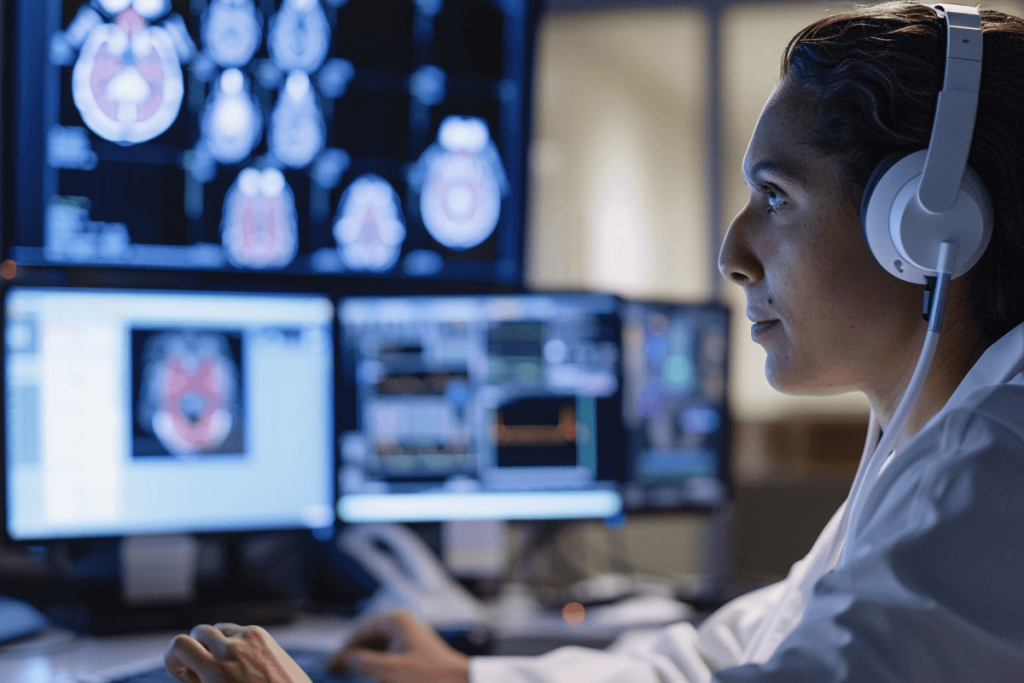
Artificial intelligence (AI) is rapidly emerging as an exciting technology in oncology with potential applications in cancer prevention, early diagnosis, treatment, planning, survivorship, and end-of-life care. AI is already showing great promise in predicting cancer risk and identifying patients at high risk.
Deep learning models evaluated disease trajectories of 6 million Danish patients, and 3 million US veterans achieved an area under the curve (AUC) of 0.88 for predicting pancreatic cancer risk up to 36 months prior to diagnosis. AI-assisted mammography continued to improve breast cancer detection with an AUC of 0.90 while reducing radiologist workload by 44.2%. For lung cancer, AI achieved an AUC of 0.94 in risk prediction from low-dose CT scans.
AI-based screening tools are also improving the detection of colorectal cancer. In a randomized trial comparing an AI-assisted colonoscopy to a usual colonoscopy, the adenoma detection rate (ADR) was 39.9% and 32.4%, respectively (p < 0.001). For cervical carcinoma, an AI screening program showed an AUC of 0.947, sensitivity of 0.946, specificity of 0.890, and accuracy of 0.892.
AI is also driving advances in diagnostic accuracy in radiology and pathology. For example, in prostate cancer, AI models achieved 0.97 sensitivity and specificity for tumor detection, while for lung cancer, lesion detection resulted in an AUC of 97.4%. In pathology, AI has been effectively used for grading gastric cancer (accuracy 87.32%) and colorectal cancer (accuracy 88.55%). Notably, these algorithms are currently being integrated into clinical workflows through FDA-approved platforms such as Paige Prostate and Ibex Galen Prostate.
AI is also changing the treatment planning process. In surgical oncology, with AI-based planning, increased concordance between surgeons’ operative plans to 92%, compared with nearly 54% using standard methods. In radiation therapy, AI-supported adaptive planning decreased the number of optimizations from 18 to 4 while maintaining target coverage. For systemic therapy, algorithms identified immunotherapy-related toxicities including pneumonitis (AUC 0.739), hepatitis (AUC 0.729), and colitis (AUC 0.755).
AI tools can monitor cancer recurrence risks and long-term complications for cancer survivors. One study predicted pancreatic cancer recurrence following surgery with a C-index of 0.7738, and another used wearable devices in lung cancer patients to predict six-month survival with an AUC of 0.806. In mental health, AI achieved 73.1% accuracy in predicting psychiatric consultations from oncology notes.
At the end of life, AI’s role in palliative care is to help improve prognostic accuracy. For example, AI has predicted 180-day mortality in patients with gynaecologic cancer with an AUC of 0.89 and then provided a prognostic model to stimulate serious illness conversations, which increased by 10.1% when compared to high-risk patients without one of these conversations. AI models have also demonstrated increased referrals to palliative care by 91% and hospice by 1100%.
Despite these advances, the literature highlights the need for rigorous validation of AI, robust data privacy protections, and safeguards against algorithmic bias. Likewise, interdisciplinary teamwork involving clinicians, data scientists, and policy makers will be vital for equitable implementation.
Human-AI collaboration remains central to the future of cancer care. While AI can analyze vast datasets with remarkable speed, physician judgment is vital for compassionate and patient-focused decisions. With continued progress, they envision a new era of adaptive oncology, one in which AI empowers risk prediction, personalizes treatments, and strengthens survivorship care to improve outcomes worldwide.
References: Riaz IB, Khan MA, Osterman TJ. Artificial intelligence across the cancer care continuum. Cancer. 2025. doi:10.1002/cncr.70050












